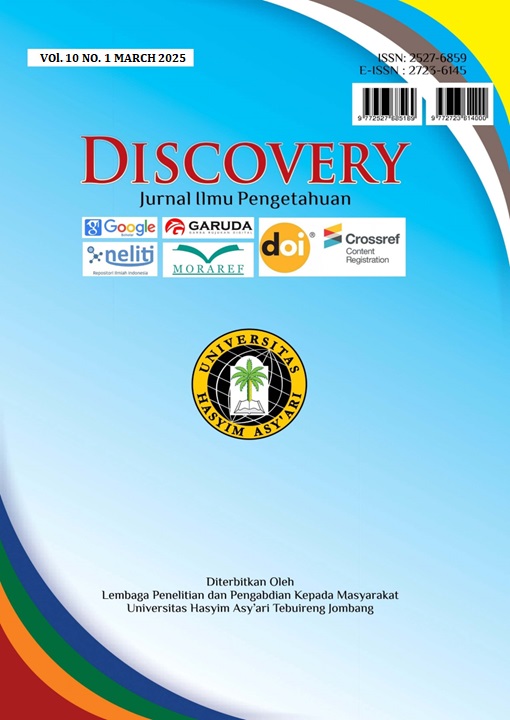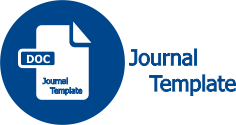Mathematical Challenges in Biology: Identifying Core Learning Difficulties
DOI:
https://doi.org/10.33752/discovery.v10i1.8702Keywords:
Absolute value, Basic mathematics, Biology students, Learning improvement, Mathematical difficulties, ProbabilityAbstract
Biology students often face difficulties in understanding basic mathematical concepts, which can impact their comprehension of advanced science courses. This study aims to identify the key mathematical topics that pose challenges for first-year biology students to facilitate instructional improvements before the final exam. The research involved an analysis of midterm exam results from 90 students enrolled in a Basic Mathematics course. The data examined included completion time and accuracy rates across six key topics: equations and inequalities, matrices, absolute value, real numbers, probability, and sets. The results indicated that probability had the longest average completion time (4 minutes 36 seconds), while absolute value had the highest error rate, with only 13.19% correct responses. Further interviews revealed that students struggled with understanding the formal concept of absolute value and often misapplied probability rules for independent events. These findings highlight the need for improved teaching strategies, particularly for topics with high error rates, such as concept-based approaches and more structured problem-solving exercises. Enhancing students' mathematical proficiency through targeted interventions is expected to better prepare them for future academic challenges.
Downloads
References
Canner, J., & Clinkenbeard, J. E. (2023). Threshold Concepts in Quantitative Reasoning.
Numeracy, 17(1), 1–19. https://doi.org/10.5038/1936-4660.17.1.1446
Cooper, K. M., Downing, V. R., & Brownell, S. E. (2018). The influence of active learning
practices on student anxiety in large-enrollment college science classrooms.
International Journal of STEM Education, 5(1). https://doi.org/10.1186/s40594-018-
-6
England, B. J., Brigati, J. R., Schussler, E. E., & Chen, M. M. (2019). Student anxiety and
perception of difficulty impact performance and persistence in introductory biology
courses. CBE Life Sciences Education, 18(2), 1–13. https://doi.org/10.1187/cbe.17-12-
Etobro, A. B., & Fabinu, O. E. (2017). Students’ perceptions of difficult concepts in biology
in senior secondary schools in Lagos state. Global Journal of Educational Research, 16(2),
https://doi.org/10.4314/gjedr.v16i2.8
Everingham, Y. L., Gyuris, E., & Connolly, S. R. (2017). Enhancing student engagement to
positively impact mathematics anxiety, confidence and achievement for
interdisciplinary science subjects. International Journal of Mathematical Education in
Science and Technology,
(8), 1153–1165.
https://doi.org/10.1080/0020739X.2017.1305130
Feliciano-Semidei, R., Wu, K., & Chaphalkar, R. M. (2022). Introducing conditional
probability using the Monty Hall problem. Journal of University Teaching and Learning
Practice, 19(2), 93–109. https://doi.org/10.53761/1.19.2.7
Flanagan, K. M., & Einarson, J. (2017). Gender, math confidence, and grit: Relationships
with quantitative skills and performance in an undergraduate biology course. CBE Life
Sciences Education, 16(3), 1–11. https://doi.org/10.1187/cbe.16-08-0253
Fleischner, T. L., Espinoza, R. E., Gerrish, G. A., Greene, H. W., Kimmerer, R. W., Lacey, E.
A., Pace, S., Parrish, J. K., Swain, H. M., Trombulak, S. C., Weisberg, S., Winkler, D. W., &
Zander, L. (2017). Teaching Biology in the Field: Importance, Challenges, and Solutions.
BioScience, 67(6), 558–567. https://doi.org/10.1093/biosci/bix036
Gunarti, M. R., Harini, N. V., Zuhri, Z., & Dharmawan, P. B. (2022, December). Interpreting
kinematics graph: What do students’ show?. In AIP Conference Proceedings (Vol. 2468,
No. 1). AIP Publishing.
Harini, N. V., Fuad, Y., & Ekawati, R. (2018). Students’ covariational reasoning in solving
integrals’ problems. In Journal of Physics: Conference Series (Vol. 947, No. 1, p. 012017).
IOP Publishing.
Harini, N. V. (2019, February). Capturing students’ covariational reasoning levels while
solving integrals problem. In Journal of Physics: Conference Series (Vol. 1157, No. 4, p.
. IOP Publishing.
Harini, N. V. (2024). Design Contextual Problems and Solutions Related to Linear
Programming Topics with The Help Of Geogebra. Noumerico: Journal of Technology in
Mathematics Education, 2(2), 156-164.
Hoffman, K., Leupen, S., Dowell, K., Kephart, K., & Leips, J. (2016). Development and
assessment of modules to integrate quantitative skills in introductory biology courses.
CBE Life Sciences Education, 15(2), 1–12. https://doi.org/10.1187/cbe.15-09-0186
Hurrell, D. (2021). Conceptual Knowledge OR Procedural Knowledge or Conceptual
Knowledge AND Procedural Knowledge: Why the Conjunction is Important to Teachers.
Australian Journal of Teacher Education,
(2), 57–71.
https://doi.org/10.14221/ajte.2021v46n2.4
Ikhsan, M. M., & Sa’adah, N. (2024). Pengaruh Model Pembelajaran Kooperatif Tipe Stad
Terhadap Prestasi Belajar Matematika Siswa Sma. Discovery : Jurnal Ilmu Pengetahuan,
(2), 85–94. https://doi.org/10.53565/pssa.v6i2.180
Li, Y., & Schoenfeld, A. H. (2019). Problematizing teaching and learning mathematics as
“given” in STEM education. International Journal of STEM Education, 6(1).
https://doi.org/10.1186/s40594-019-0197-9
Louie, N. (2020). Agency Discourse and the Reproduction of Hierarchy in Mathematics
Instruction.
Cognition and Instruction,
(1), 1–26.
https://doi.org/10.1080/07370008.2019.1677664
Luque, A., Mullinix, J., Anderson, M., Williams, K. S., & Bowers, J. (2022). Aligning Calculus
with Life Sciences Disciplines: The Argument for Integrating Statistical Reasoning.
Primus, 32(2), 199–217. https://doi.org/10.1080/10511970.2021.1881847
Maass, K., Geiger, V., Ariza, M. R., & Goos, M. (2019). The Role of Mathematics in
interdisciplinary STEM education. ZDM - Mathematics Education, 51(6), 869–884.
https://doi.org/10.1007/s11858-019-01100-5
Miswaro, S. M., & Zuhri, Z. (2023). ANALISIS KESULITAN SISWA DALAM
MENYELESAIKAN SOAL CERITA MATEMATIKA PADA MATERI STATISTIKA DITINJAU
DARI KEMAMPUAN MATEMATIKA SISWA. Center of Education Journal (CEJou), 4(2).
Purba, D., Harini, N. H., Mirianto, A. D., & Zuhri, Z. (2019, December). Applying Spherical
Triangle Concept in Simulator to Determine Distance and Direction of Ship.
In Mathematics, Informatics, Science, and Education International Conference (MISEIC
(pp. 36-38). Atlantis Press.
Spooner, F., Saunders, A., Root, J., & Brosh, C. (2017). Promoting Access to Common Core
Mathematics for Students with Severe Disabilities Through Mathematical Problem
Solving. Research and Practice for Persons with Severe Disabilities, 42(3), 171–186.
https://doi.org/10.1177/1540796917697119
Sriwijayati, A. M., Febriyanti, R., & Albab, M. U. (2024). Pengaruh Model Pembelajaran
Berbasis Masalah Berbantuan Geogebra Terhadap Kemampuan Berpikir Kritis Siswa
Smp.
Discovery : Jurnal Ilmu Pengetahuan,
(2), 122–130.
https://doi.org/10.36928/jsm.v6i2.2813
Warshauer, H. K. (2015). Productive struggle in middle school mathematics classrooms.
Journal of Mathematics Teacher Education,
(4), 375–400.
https://doi.org/10.1007/s10857-014-9286-3
Zahro, S. F., & Zuhri, Z. (2024). Analisis Kemampuan Berpikir Kritis Siswa dalam
Menyelesaikan Masalah Materi Program Linear Ditinjau dari Gaya Kognitif FieldDependent dan Field-Independent. Discovery : Jurnal Ilmu Pengetahuan, 09(October),
–121.
Zuhri, Z., Hamdani, A. S., & Harini, N. V. (2022). Analisis Koneksi Matematika Siswa
dalam Menyelesaikan Masalah Ditinjau dari Kecenderungan Gaya Berpikir. Musamus
Journal of Mathematics Education, 4(2), 108-118.
Downloads
Published
How to Cite
Issue
Section
License
Copyright (c) 2025 Novita Vindri Harini

This work is licensed under a Creative Commons Attribution-ShareAlike 4.0 International License.

















